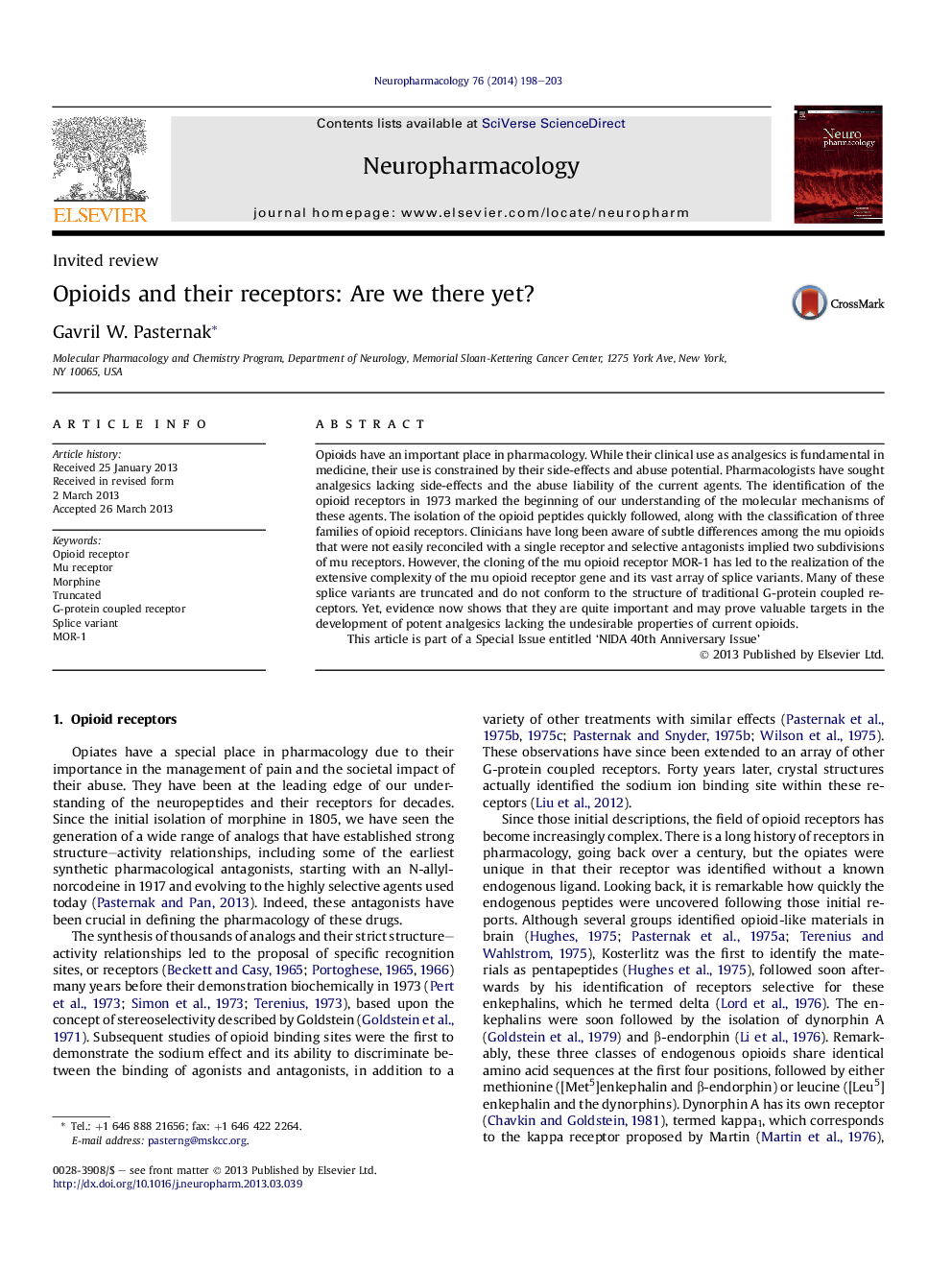| کد مقاله | کد نشریه | سال انتشار | مقاله انگلیسی | نسخه تمام متن |
|---|---|---|---|---|
| 2493268 | 1115497 | 2014 | 6 صفحه PDF | دانلود رایگان |

• Morphine and most clinical opiates act through mu opioid receptors.
• The mu opioid receptor MOR-1 was cloned twenty years ago.
• Splicing of the mu opioid receptor generates three major classes of variants.
• MOR-1 splice variants may prove useful in the development of analgesics.
Opioids have an important place in pharmacology. While their clinical use as analgesics is fundamental in medicine, their use is constrained by their side-effects and abuse potential. Pharmacologists have sought analgesics lacking side-effects and the abuse liability of the current agents. The identification of the opioid receptors in 1973 marked the beginning of our understanding of the molecular mechanisms of these agents. The isolation of the opioid peptides quickly followed, along with the classification of three families of opioid receptors. Clinicians have long been aware of subtle differences among the mu opioids that were not easily reconciled with a single receptor and selective antagonists implied two subdivisions of mu receptors. However, the cloning of the mu opioid receptor MOR-1 has led to the realization of the extensive complexity of the mu opioid receptor gene and its vast array of splice variants. Many of these splice variants are truncated and do not conform to the structure of traditional G-protein coupled receptors. Yet, evidence now shows that they are quite important and may prove valuable targets in the development of potent analgesics lacking the undesirable properties of current opioids.This article is part of a Special Issue entitled ‘NIDA 40th Anniversary Issue’
Journal: Neuropharmacology - Volume 76, Part B, January 2014, Pages 198–203